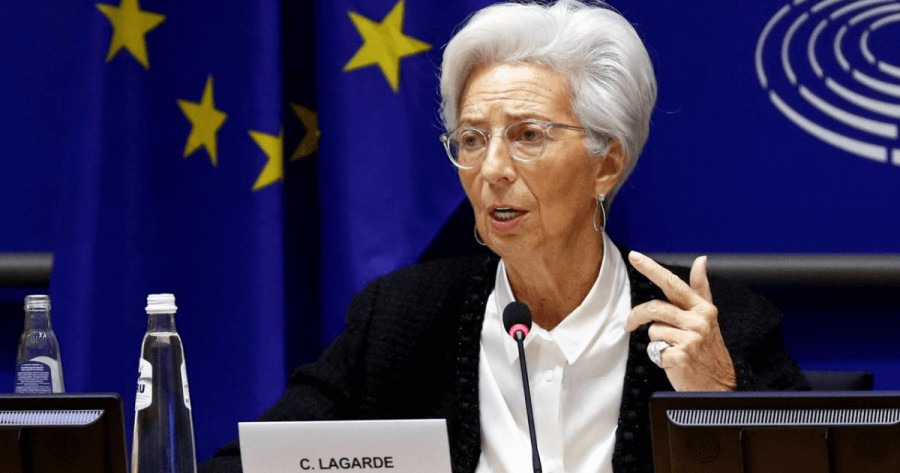The euro responded with a significant rise following the ECB's decision to cut interest rates. But why did this happen? Let's break it down.
The key reason behind the euro's rally was ECB President Christine Lagarde's statement that the European Central Bank is ending its interest rate reduction campaign after the eighth cut this year.

Since the eurozone is suffering from U.S. tariffs, the deposit rate was lowered by a quarter of a percentage point to 2% on Thursday — as predicted by all economists. The ECB described inflation as being close to its 2% target. However, the ECB's optimism contrasts with growing concerns about economic growth in the region. A global economic slowdown, exacerbated by trade wars and geopolitical tensions, is putting pressure on the export-driven economies of the eurozone. Although the rate cut is intended to stimulate lending and investment, it may not be sufficient to counteract external negative factors. Moreover, the effect of the rate cut could be limited, given that many banks already have excess reserves. In such circumstances, reducing deposit costs might not significantly boost lending but rather lead to asset reallocation.
During the press conference, Lagarde stated that the ECB is nearing the end of its rate-cutting campaign. "We are approaching the end of the monetary policy cycle that was a response to severe shocks, including COVID-19, Russia's military special operation, and the energy crisis," President Christine Lagarde told journalists in Frankfurt. "At the current level of interest rates, we believe we are well positioned to navigate the uncertain conditions ahead."
Against this backdrop, money markets reduced bets on additional cuts this year and no longer see another quarter-point reduction as a given. Short-term bonds led the decline, lifting the yield on German two-year bonds by six basis points to 1.86%, a two-week high.
With inflation below the ECB's target for the first time in eight months — and only the second time since 2021 — officials increasingly believe their mission to curb the region's biggest price surge is nearly complete. The major uncertainty remains U.S. President Donald Trump's trade policy, which has undermined trust in the U.S. and clouded global growth, pushing officials to call for a pause in the easing cycle.
The unpredictability of the American leader's actions, the imposition of tariffs, and threats of further increases have created an atmosphere of uncertainty, restraining investment and economic activity worldwide. This uncertainty forced the central bank to take unprecedented measures, including rate cuts, to support economic growth. However, the effectiveness of these measures is limited when the core issues are weak demand and a lack of confidence in the future. Whether European authorities will conclude a trade agreement with the U.S. by July 9 remains a complex question — and such an outcome seems unlikely. Under these conditions, the prospects for eurozone economic growth remain uncertain.
The ECB's new quarterly forecasts account for inflation below the 2026 target, at 1.6%. The economy is expected to grow by 1.1% next year — slightly less than previously forecast. The ECB noted in its statement that although trade uncertainty will likely weigh on business investment and exports, fiscal stimulus should support growth later. Highlighting the extreme uncertainty, the ECB presented moderate and severe scenarios alongside its baseline forecast for the 20 eurozone countries.
The moderate scenario envisions significant growth improvement compared to the baseline, with limited inflation impact. Under the harsher scenario, growth would be weaker, as would inflation, since the upward pressure from higher U.S. import tariffs would be more than offset by weaker demand.
Lagarde described the risks to the economy as still tilted to the downside. However, a strong labor market, rising incomes, and easier financing conditions should help consumers and firms withstand the effects of a volatile global environment.
According to Lagarde, inflation is expected to return to the target by 2027, despite lower energy prices and a stronger euro, both of which will put downward pressure on inflation in the near term.
As for the current technical picture of EUR/USD, buyers now need to secure the 1.1453 level. Only then will they be able to target a test of 1.1490. From there, a climb to 1.1530 becomes possible, although achieving this without support from large players will be challenging. The ultimate target is 1.1570. If the instrument declines, serious buying activity is expected around 1.1407. If there's no buying interest there, it would be preferable to wait for a renewal of the 1.1361 low or to open long positions from 1.1314.
As for the current technical picture of GBP/USD, pound buyers need to overcome the nearest resistance at 1.3581. Only then will they be able to aim for 1.3613, although breaking above this level will be difficult. The ultimate target is 1.3659. If the pair declines, bears will attempt to seize control at 1.3544. If they succeed, a breakout below this range will deal a serious blow to the bulls' positions and push GBP/USD down to a minimum of 1.3505 with the prospect of reaching 1.3470.












